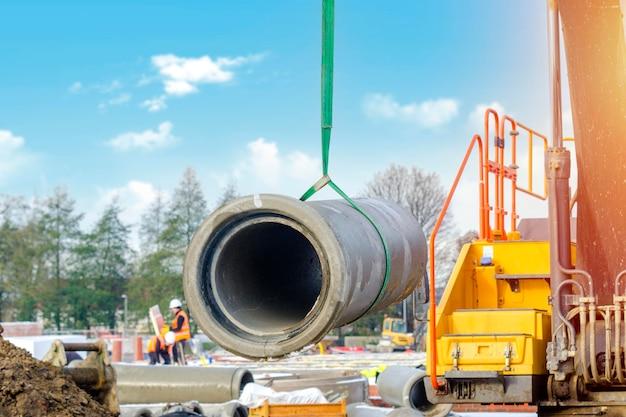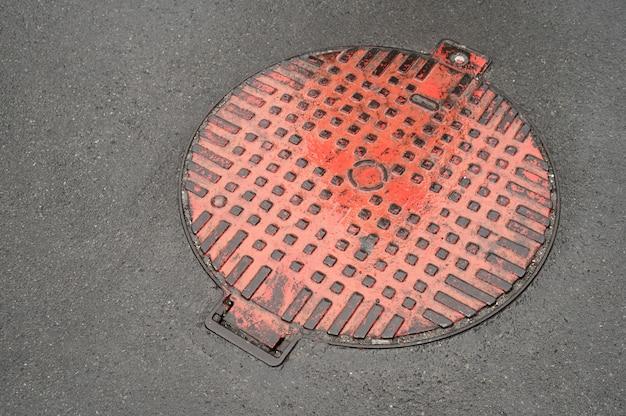Drainage issues are a common concern for homeowners, especially when it comes to protecting their driveways from excess water. If you’re planning to install a drain pipe under your driveway, it’s important to get it right the first time to avoid costly repairs in the future. With the right depth and type of pipe, you can effectively divert water and prevent damage to your driveway.
In this blog post, we’ll explore the key considerations for burying a drain pipe under a driveway. We’ll answer questions such as “Can you put a French drain under a driveway?” and “How deep should a French drain be to drive over?”. Additionally, we’ll discuss the use of PVC pipe, the proper depth for drainage pipes under concrete, and how to choose the right type of pipe for underground installations. So, whether you’re dealing with a new construction or an existing driveway, keep reading to ensure your drainage system is set up for success.
How Deep to Bury Drain Pipe Under Driveway
So, you’ve decided to tackle the daunting task of burying a drain pipe under your driveway. Good for you! It’s a project that requires some elbow grease and a bit of know-how, but once it’s done, you’ll be the envy of all your neighbors. But before you dive headfirst into the trenches, you’re probably wondering just how deep you need to bury that drain pipe. Don’t worry, my trusty readers, I’ve got you covered!
Factors to Consider
Before we get into the nitty-gritty of pipe burial depths, let’s talk about the factors that can influence your decision. The depth at which you bury your drain pipe will depend on a few key factors:
1. Frost Line Depth
One of the most important considerations is the frost line depth in your area. The frost line is the depth at which the ground freezes during the winter months. If your pipe isn’t buried below the frost line, it can freeze and block the flow of water. And nobody wants a blocked drain pipe, especially when it’s freezing outside!
2. Traffic Load
The next thing to consider is the traffic load on your driveway. If you have heavy vehicles, such as trucks or RVs, regularly driving over your driveway, you’ll need to bury the drain pipe deeper. The weight of these vehicles can put additional pressure on the pipe, so a deeper burial depth will help prevent any damage or disruption to the flow of water.
Recommended Depths
Now that we know what factors to consider, let’s get down to the depths!
1. Frost Line Depth + 12 inches
To ensure your drain pipe remains frost-free, it’s generally recommended to bury it at least 12 inches below the frost line in your area. This will help protect it from freezing during those chilly winter months. Remember, a frozen drain pipe is about as useful as a chocolate teapot!
2. Traffic Load Depth + 6 inches
If you have heavy vehicles regularly traversing your driveway, you’ll want to add an extra 6 inches to the burial depth. This will provide some extra protection and prevent any mishaps caused by the weight of these monstrous metal machines. You wouldn’t want your drain pipe to be squished like a pancake, would you?
Well, my dear readers, by now you should have a good idea of how deep to bury that drain pipe under your driveway. Remember, it’s all about considering the frost line depth and the traffic load. And don’t forget to give yourself a pat on the back for being brave enough to tackle this project! Just remember, if all else fails, you can always call in the professionals. After all, there’s no shame in asking for a little help. Happy digging!
FAQ: How Deep To Bury Drain Pipe Under Driveway
Can you put a French drain under driveway
Yes, you can definitely put a French drain under your driveway. In fact, it can be an effective solution for preventing water buildup and potential damage. Placing the French drain under the driveway helps to divert excess water away from the surface, ensuring your driveway remains free from unwanted pooling or erosion.
Can you run PVC under a driveway
Absolutely! PVC (Polyvinyl Chloride) pipes are commonly used for underground plumbing systems, including those running beneath driveways. PVC pipes are known for their durability, strength, and resistance to corrosion. Just make sure to follow the recommended installation guidelines and use the appropriate size and grade of PVC pipe for your specific needs.
How deep should a French drain be to drive over
When installing a French drain under a driveway, it’s essential to consider the depth to ensure durability and functionality. Ideally, the French drain should be placed at a depth of at least 18 to 24 inches beneath the driveway surface. This depth allows for sufficient water drainage and prevents potential damage when vehicles drive over it.
Can Schedule 40 PVC be used underground
Absolutely! Schedule 40 PVC is commonly used for underground applications due to its strength, durability, and resistance to damage from external factors like soil or pressure. When burying Schedule 40 PVC underground, it’s crucial to follow local building codes and guidelines to ensure proper installation and protection against potential damage.
How deep should drain pipe be under concrete
When installing a drain pipe under concrete, it’s important to bury it at the appropriate depth to maintain the integrity of both the pipe and the concrete. Generally, a drain pipe should be buried at a minimum of 18 to 24 inches below the concrete surface. This depth provides adequate protection and allows for effective water drainage.
What is the pipe under the driveway called
The pipe commonly found underneath driveways is typically referred to as a culvert pipe. A culvert pipe serves as a passageway for water, allowing it to flow under the driveway and prevent surface water buildup. These pipes are typically made of durable materials such as concrete, steel, or plastic and come in various sizes to accommodate different amounts of water flow.
How deep should a culvert pipe be
The depth at which a culvert pipe should be installed depends on various factors, including the anticipated water flow, soil conditions, and local regulations. However, as a general guideline, a culvert pipe should be buried at a depth of at least 24 to 36 inches to ensure proper function and prevent damage from heavy vehicles or extreme weather conditions.
How deep can PVC pipe be buried
PVC pipes can be buried at different depths depending on the application and local regulations. However, for most residential drainage purposes, PVC pipes are typically buried at a minimum depth of 18 to 24 inches. It’s essential to consult local building codes to determine the required depth for your specific project to ensure compliance and optimal performance.
Can corrugated pipe be used under driveway
Yes, corrugated pipes are commonly used for underground applications, including installations under driveways. These pipes, known for their flexibility and durability, can withstand the weight of vehicles passing over them while providing effective drainage. When using corrugated pipes under driveways, proper bedding and installation techniques are essential to ensure longevity and performance.
Can you drive over 4-inch drainage pipe
Yes, you can drive over a 4-inch drainage pipe. However, it’s essential to use the appropriate pipe material and ensure proper installation. For instance, Schedule 40 PVC pipes, which are commonly used for drainage applications, can withstand vehicular traffic. Nonetheless, it is crucial to consider the weight and frequency of vehicles using the driveway to determine the necessary pipe strength.
How deep should I dig a drainage trench
When digging a drainage trench, the depth is an important factor to consider. In general, it is recommended to dig the trench at least 12 to 24 inches deep to provide sufficient space for the drainage pipe and allow for proper water flow. However, the precise depth may vary depending on factors such as the soil type, water volume, and local regulations.
How deep can you bury flexible drain pipe
Flexible drain pipes offer versatility and ease of installation. Typically, these pipes are buried at a depth of 12 to 18 inches. However, the depth may vary depending on local building codes, the specific application, and the pipe’s intended purpose. Always consult relevant guidelines and regulations to ensure proper burial depth for your flexible drain pipe.
Can you bury a drainage pipe
Absolutely! Burying a drainage pipe is a common and effective method to redirect excess water and prevent issues such as waterlogging or erosion. Whether it’s a French drain, a culvert pipe, or a simple drainage system, burying the pipe allows water to flow away from problem areas, ensuring a healthier and more functional outdoor space.
How deep should drainage pipe be buried
The optimal burial depth for a drainage pipe may vary depending on factors such as pipe size, soil conditions, and local regulations. However, as a general guideline, a depth of 18 to 24 inches is commonly recommended for most residential drainage systems. This depth provides sufficient protection and facilitates efficient water flow.
How deep should a soil pipe be buried
When it comes to burying a soil pipe, it is generally advised to follow local building codes and guidelines. The exact burial depth may vary depending on factors such as soil conditions, pipe material, and intended use. However, a typical recommendation for burying a soil pipe is to place it at a depth of 12 to 18 inches. It’s important to consult relevant regulations to ensure compliance.
How long will schedule 40 PVC pipe last underground
Schedule 40 PVC pipes are highly durable and designed to withstand various environmental conditions, including being buried underground. Under normal circumstances and proper installation, these pipes have an estimated lifespan of 50 to 100 years. However, factors such as soil composition, temperature variations, and external pressure should be considered, as they can affect the longevity of the pipe.
What type of pipe is used for underground drainage
For underground drainage systems, various types of pipes can be used depending on the specific needs and requirements. Common options include PVC, HDPE (High-Density Polyethylene), and corrugated pipes. These pipes offer different levels of flexibility, durability, and resistance to corrosion. The choice of pipe material should consider factors such as soil conditions, water volume, and the intended application.
Should I run conduit under driveway
If you have any plans to install electrical wiring, irrigation systems, or any other utilities that require conduit, it is generally recommended to run the conduit under the driveway. This ensures a cleaner, more organized setup and prevents potential tripping hazards or damage to exposed lines. Running conduit under the driveway protects the wiring or pipes and allows for a more aesthetically pleasing and functional installation.
How deep should drain pipe be under driveway
To ensure the drain pipe remains protected and functions properly, it is suggested to bury it at a depth of 18 to 24 inches below the driveway surface. This depth provides adequate coverage and safeguards the pipe from potential damage due to vehicle traffic or extreme weather conditions. Additionally, it promotes efficient water drainage, preventing issues such as water accumulation or erosion.
Note: The information provided in this article is for general reference only. It is essential to consult local building codes and regulations specific to your area and seek professional advice when undertaking any construction or installation project.

